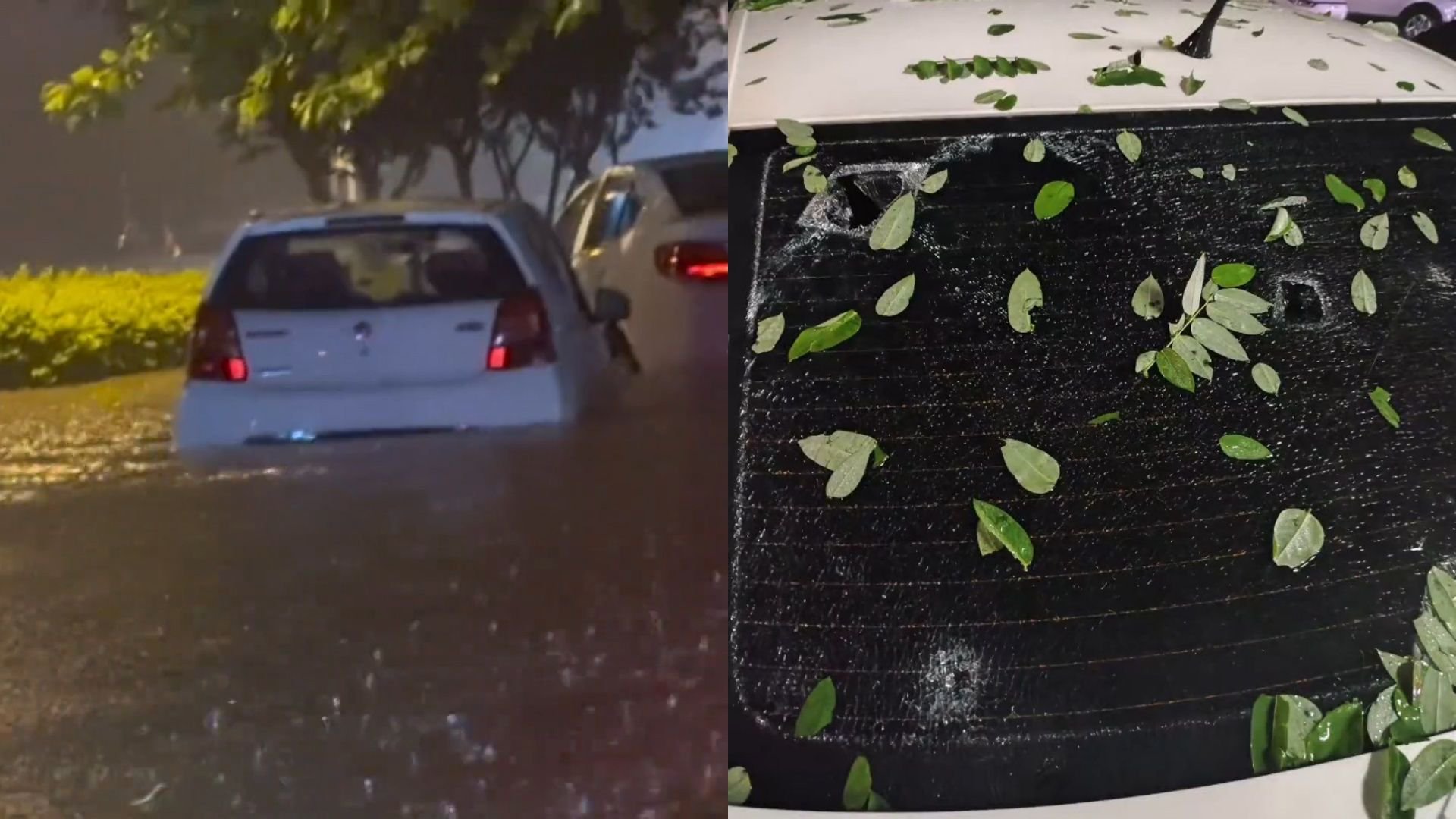The past weekend, Guangxi coastal area suffered extreme heavy rainfall. The Central Meteorological Observatory predicted that from May 21 to 26, most of the rain continued in the south, and Guangxi, Guangdong, Fujian, Hainan and other places had heavy rainfall, with heavy rainfall areas overlapping.
At this time of the year, when the South China Sea summer monsoon breaks out, the south-west water vapor transport will be significantly enhanced. In combination with the cold air activity in the north, it is easy to lead to an increase in heavy rainfall events in the south, and severe convective weather occurs frequently, so precautions should be taken.
Three centers of rainstorm to heavy rainstorm in Guangxi
In the past two days, many places in the south have experienced heavy rainfall, and Guangdong, Guangxi and other places have become the centers of heavy rainfall. Among them, from the evening of May 18 to the day of May 19, Guangxi experienced the strongest rainstorm since the flood season. This rainfall is characterized by strong rainfall and wide rainstorm range.
Nong Mengsong, chief forecaster of the Guangxi Zhuang Autonomous Region Meteorological Observatory, said that there were three centers of heavy rain to heavy rain in Guangxi, respectively located in western Guangxi, northeastern Guangxi and coastal areas. During the rainfall period, the maximum 24-hour rainfall reached 610.5 mm, and the maximum hourly rainfall intensity was 189.6 mm, breaking the historical record of maximum hourly rainfall intensity in Guangxi.
Why is the rain so fierce? Nong Mengsong said that this was caused by the strengthening and northward pushing of the Bay of Bengal monsoon and the South China Sea monsoon, and the weak cold air that controls South China. "The monsoon surge slowly moves eastward day by day, resulting in a strong precipitation process from west to east in Guangxi. The precipitation in the west and coastal areas of Guangxi has a significant convective feature, with slow convection movement and the 'train effect', which leads to heavy rain, and even extreme heavy rain, accompanied by thunderstorms and strong winds and other strong convective weather in coastal areas." Nong Mengsong said.
Guangxi is the epitome of this violent precipitation in South China, which is a large-scale precipitation triggered by the convergence of cold and warm air currents. Both of them have obvious convection characteristics, and new convection is constantly emerging, producing "train effect". Shi Yan, a meteorological analyst at China Weather Network, said that the so-called "train effect" is a series of convective clouds that successively affect the same place, just like different carriages of a train passing through the same railway track, leading to heavy rain for a long time.
South China is about to enter the "Dragon Boat Water"
In the coming week, most parts of South China will still have frequent rainfall, and South China will soon enter the "Dragon Boat Water". Every year from April to June, there is a period of concentrated precipitation in South China, and it rains heavily every other day. Because it is the time of Dragon Boat Festival dragon boat race, it is called "Dragon Boat Water" in the folk image. Meteorologically, the precipitation between May 21 and June 20 of each year is called Dragon Boat Water, which means that the most frequent period of rainfall in the year is coming, and the rainfall in most areas will reach the peak of the previous flood season.
Today and tomorrow, the heavy rainfall will further move eastward, and the coastal areas of Guangdong, eastern Fujian, Hainan and its offshore areas will become the center of heavy rainfall. The above areas will have heavy rain, local heavy rain, and may be accompanied by short-term heavy rainfall, local landmine storm, gale or hail and other severe convective weather.
From the 22nd to the 25th, the rainfall in South China weakened, mainly light or moderate rain, and heavy rain occurred in parts of Jiangnan, South China, Sichuan and Yunnan.
From the 26th, with the warm and humid air flow in the southwest again strengthening and the cold air moving southward, the south will usher in a round of heavy rainfall weather process, and local areas such as Jiangnan, South China, Guizhou and Yunnan will be hit by rainstorm or heavy rain. At present, the forecast is far from effective. It is suggested that the public pay attention to the near forecast and early warning information.
On the whole, in the coming week, the heavy rainfall areas in Guangdong, Guangxi, Fujian and Hainan are highly overlapping, and the soil moisture in some areas is high. The public needs to pay attention to preventing various secondary disasters such as mountain torrents, floods in small and medium-sized rivers, urban and rural waterlogging caused by continuous rainfall.
The South China Sea summer monsoon is about to break out, promoting the rainy season in China
The South China Sea summer monsoon, also known as the "South China Sea monsoon", refers to a kind of circulation situation in which southwest wind prevails in the lower troposphere and northeast wind prevails in the upper troposphere of the South China Sea during the seasonal process of atmospheric circulation in late spring and early summer. The fourth season of May is a signal of the end of winter monsoon and the beginning of summer monsoon in China.
According to the China Weather Network, in early May, the Asian summer monsoon began to stir near the Bay of Bengal. In the middle of May, a large amount of water vapor entered the South China Sea, where it was heated and watered, and finally carried a large amount of water vapor and heat to the coast of South China. The South China Sea summer monsoon broke out.
After the onset of the South China Sea summer monsoon, the south-west water vapor transport is significantly enhanced, which is likely to lead to the increase of strong precipitation events with large intensity, wide range and long duration in southern China, and the frequent occurrence of severe convective weather. The outbreak of the South China Sea summer monsoon will change the heat and water balance of the entire Asian region, which is a major turning point in the seasonal change of the climate in Asia, and also means that China will enter the main flood season in an all-round way. Under the "cooperation" of the water vapor brought by the monsoon and the subtropical high, the main rain belt in China moves from south to north.
In addition to affecting the process of the main rain belt in China, the intensity of the South China Sea summer monsoon also affects the total precipitation in different regions of China during the flood season. The data show that the South China Sea summer monsoon intensity index has a significant inverse relationship with the precipitation in the middle and lower reaches of the Yangtze River and the Huaihe River basin in summer, while it has a significant positive correlation with the precipitation in the south of the Yangtze River and the precipitation in the post flood season in South China.
With the outbreak of the South China Sea summer monsoon, China will enter the main flood season in an all-round way. In the future, there will be frequent rainfall in many places in the south. It is suggested that the local public pay attention to the near forecast and early warning information, try to reduce going out when heavy rainfall occurs, and be alert to the adverse effects of thunderstorm, gale, hail and other weather; Avoid activities in hidden danger areas such as mountains and river valleys, and prevent mountain torrents, debris flows and other disasters that may be caused by local heavy rainfall.
Beijing News reporter Wang Jingxi
Editor in charge: Zhang Di















